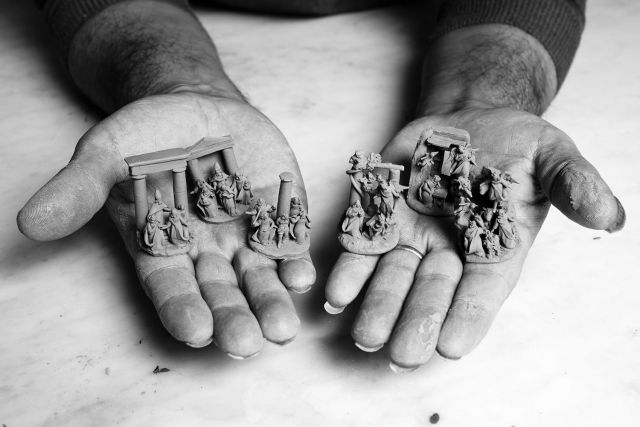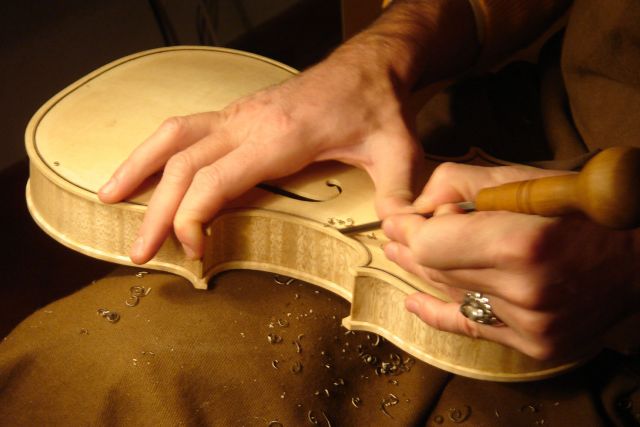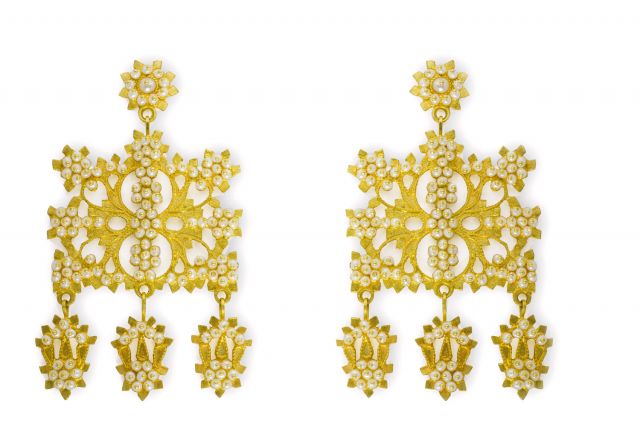In the 18th century Naples was the capital of the kingdom ruled by the Bourbons, frequented by high foreign dignitaries. These characters have left their mark in the imagination of the clients of cribs who wanted to include them in their sets: this made the Neapolitan crib unique. In this group, two Turks carry a princess on a precious sedan chair, followed by a court dwarf, a page, an armed janissary, a greyhound and a monkey, to underline the opulence of Naples, which at the time was second only to Paris in population.
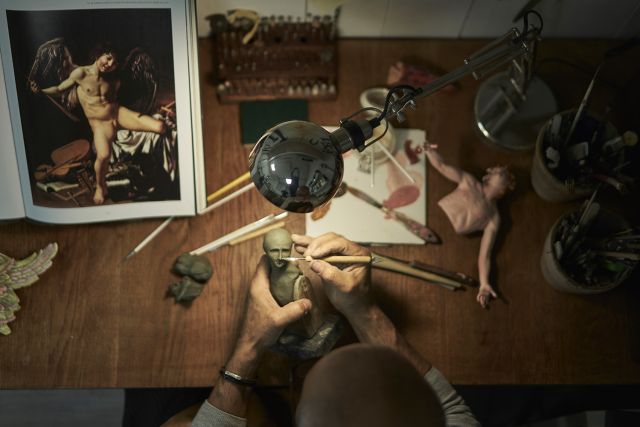
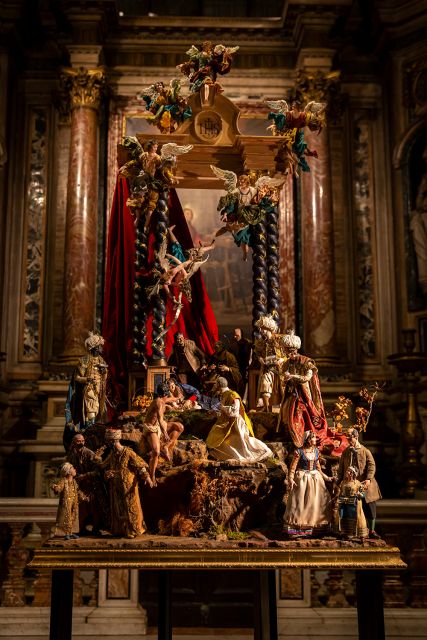
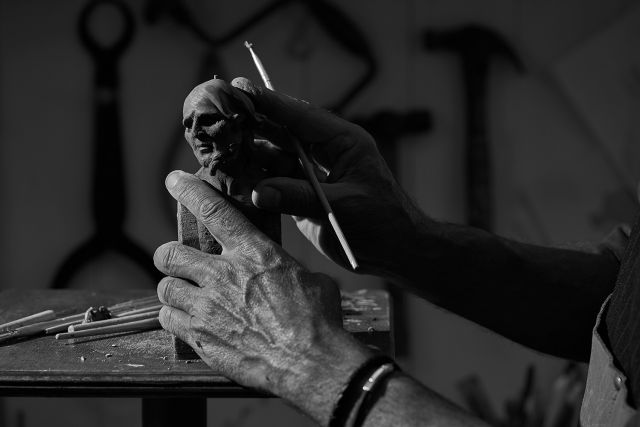
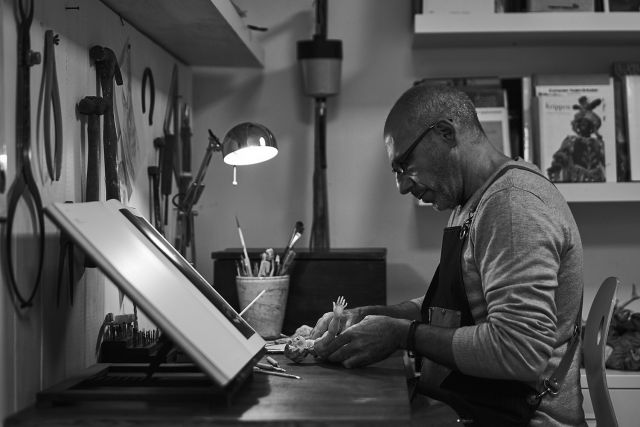
Ulderico Pinfildi
- Crib maker
- Naples, Italy
- Master Artisan
- Recommended by Observatory for Arts and Crafts
Monday to Friday 10:00 - 19:00
+39 08119804087
Staging sacred representations
- • Ulderico is a great master of the Neapolitan crib
- • He is inspired by the history of Italian art
- • Caravaggio is a central influence on his work
Raised in his parents' workshop, masters of majolica, Ulderico Pinfildi was trained in modelling and restoring ceramics. When the crib art boom exploded in Naples in the 1980s, Ulderico was fascinated by this ancient tradition and began to take an interest in the origins and history of the crib, studying its characteristics, materials and techniques for modelling human anatomy. He opened his own workshop in the late 1980s. Today, with so many years of experience behind him, he is considered one of the great masters of this art, and his pieces are collected all over the world. For his scenes, Ulderico prefers the 18th century settings of Bourbon Naples, referring directly to the birth of the Neapolitan crib: these are dramatic theatrical installations in which the figures, inspired by the history of great Italian art, are placed as actors who narrate the story of the Incarnation.
Read the full interviewWorks
Photo: ©Ugo Pons Salabelle

Photo: ©Ugo Pons Salabelle
In this work, the main character is the naked beggar, representing Humanity in its condition of despair, towards whom the Holy Family shows their mercy, through the gesture of the Virgin Mary: the Blessed Virgin acts as intermediary between human and Divine. A unique copy of the work was donated to His Holiness Pope Francis.

Photo: ©Ugo Pons Salabelle
This group, sumptuously dressed in the style of the 18th century, according to the Neapolitan crib tradition, represents the three Magi in adoration before us, as they might appear in the eyes of the Holy Family. Bearers of a message steeped in mystery, they bring gifts of gold, frankincense and myrrh, three symbols that have always been used in the cult of the dead and of what is to come.

Photo: ©Ugo Pons Salabelle
“Hail, full of grace, the Lord is with thee: blessed art thou among women” (Luke, 1:26). The scene depicts the moment in which the Archangel Gabriel appears to the Virgin Mary in a dream, announcing to her the conception of Jesus the Savior, with words and music. From the Annunciation to the Blessed Virgin Mary begins the whole story of the Incarnation of Jesus Christ, recalled in the crib.

Photo: ©Ugo Pons Salabelle
The Misericordia (Mercy) Crib, dedicated to the Pio Monte della Misericordia in Naples, was born from the idea of creating new crib figures, freely inspired by the works of Caravaggio (the Pio Monte houses his masterpiece Sette Opere della Misericordia). Pinfildi imagined a new Neapolitan crib, different from any stereotype, extrapolating and reinterpreting seven figures from seven paintings: Natività, Riposo durante la Fuga in Egitto, Madonna dei Pellegrini, Sette Opere della Misericordia, Madonna dei Palafrenieri, Ragazzo con la Canestra di Frutta, Martirio di San Matteo.





